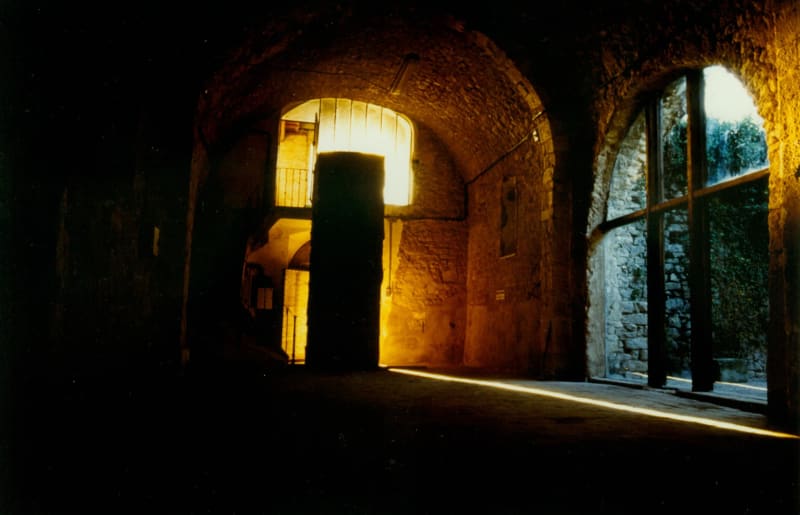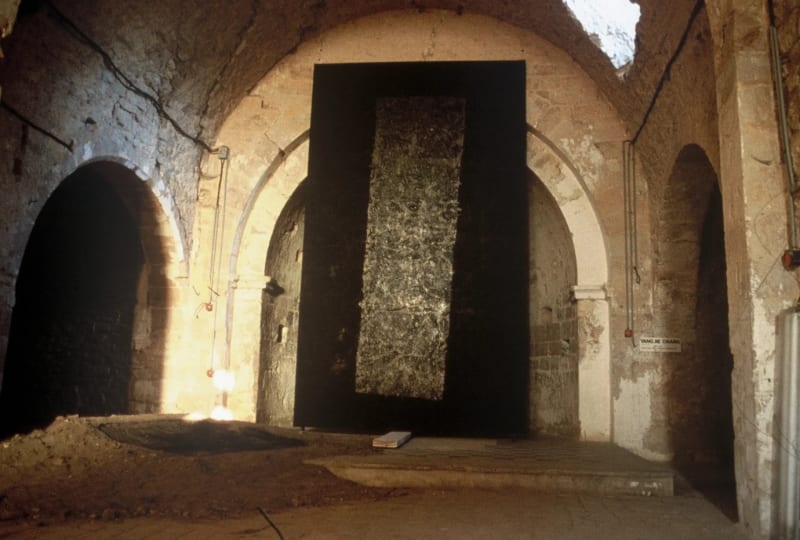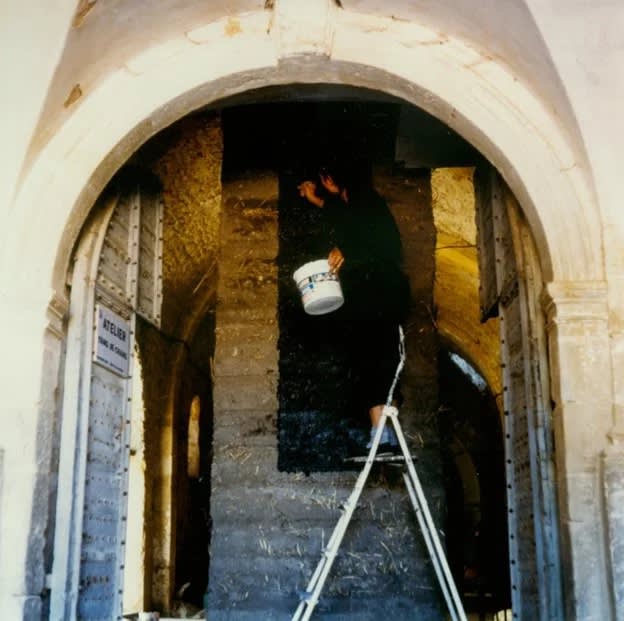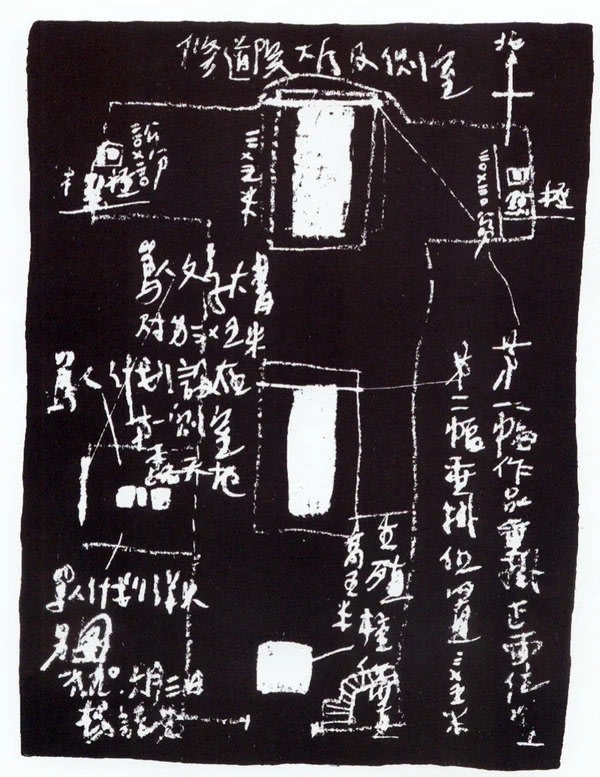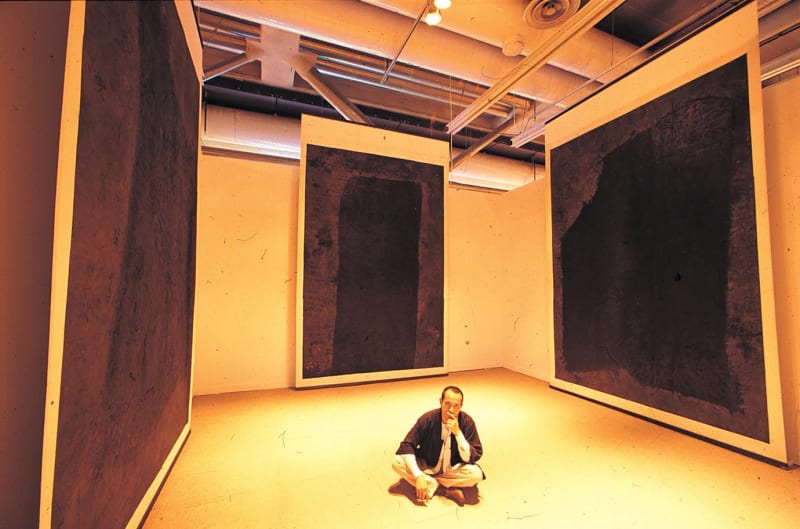Hundred Layers of Ink—Chine demain pour hier (1990) is the largest work in Yang Jiechang’s renowned Hundred Layers of Ink (1989–1999) series. Yang originally presented it in 1990 in the ruins of a church in Pourrières, France, as part of an installation that incorporated earth excavated from the cemetery outside. Following a months-long conservation effort by M+, the work is on public display again for the first time since then, alongside rare documentary footage about the series’ creative process.
In the spring of 1989, Yang Jiechang arrived in Paris to participate in Magiciens de la terre, a landmark global contemporary art exhibition organised by the Centre Pompidou. However, the works that he brought had all been detained at the Shenzhen border. Suddenly exposed to a bewildering variety of artists and practices, Yang decided to retreat into the fundamental materials and procedures of traditional Chinese art. Day after day, he layered ink and alum onto large sheets of Xuan paper, a pliant material normally used for Chinese calligraphy and painting. Over the course of a month, the layers gradually formed a thick crust with a shimmering surface, creating light out of blackness.
The Hundred Layers of Ink series has been immensely influential, anticipating the performative deployment of ink, traceless repetition, and other strategies now familiar in contemporary Chinese art. While appearing as abstract painting, the series was rooted in Yang’s foundation in classical calligraphy and painting and in Daoist and Buddhist meditation. It was inspired also by his encounter with the originally blank ‘wordless stele’ of Wu Zetian, the only female monarch in Chinese history. For Yang, each layer of ink is a concrete record of personal action and experience, containing dimensions of both space and time.
More information, please refer to https://www.mplus.org.hk/en/exhibitions/yang-jiechang-hundred-layers-of-ink/

